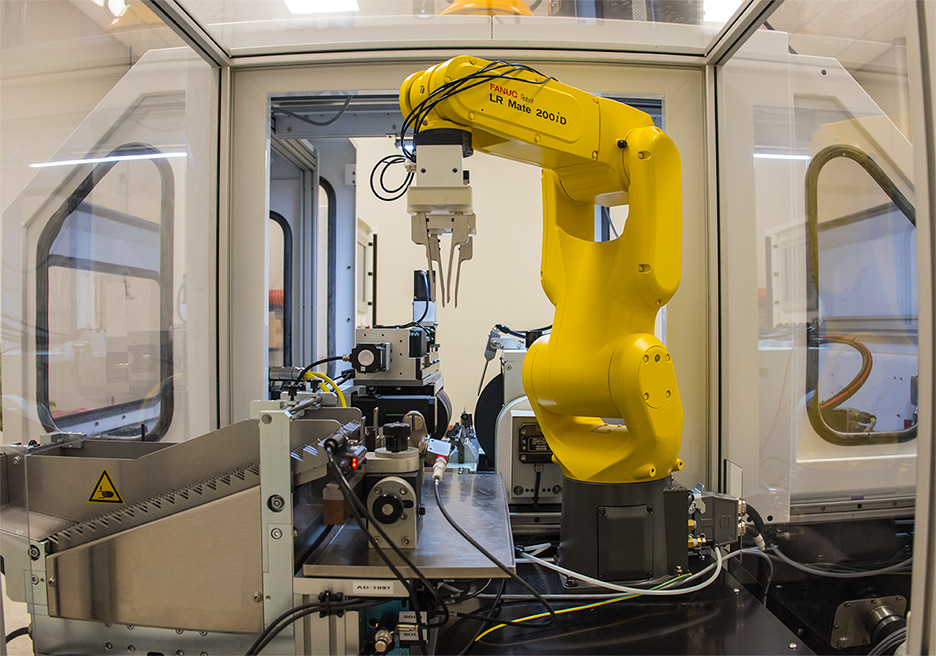
Since 1952, when Miner Gleason and Robert Barhorst founded Glebar, the spirit of innovation (as our tagline “Innovation Manufactured™” suggests), is still very alive and well at the company. Let’s review some important milestones in our history.
Compact Grinders, a First
Going back to the early fifties, the very first innovation Glebar rolled out was the introduction of the first compact centerless form grinder, for applications in the electronics and plastics industries. The second innovation was the rollout of the first compact thrufeed centerless grinder for metal working. These two improvements brought speed and ease to existing methods and set the stage for what were to become decades of precision grinding innovations that would disrupt the status quo. Something our talented team continues to do today.
Disruptive Form Grinding (Spherical Shapes)
In the sixties, Glebar revolutionized the way spherical shapes were ground. Form (or plunge) grinding was introduced to form billiard balls which outperformed existing methods by a factor of 6 to 1. Today, over 90% of the world’s billiard balls are still produced on Glebar equipment. This type of grinding technology was also adapted for the manufacturing of golf ball cores. The new method outperformed existing methods by 10 to 1. Similar to billiard balls, today, over 90% of golf balls in the world are also produced on Glebar machines.
Thrufeed Micro Grinding Innovations (Guidewires)
Towards the early nineties, Glebar pioneered an innovative process for forming tapers on wire through centerless grinding, also known as profiling. In another industry first, this process outperformed existing technology 10 to 1. By using electronics to track the position of a guidewire as it is being ground and simultaneously vary the gap between the grinding wheels, infinite geometric profiles were possible with no tooling change and by use of a simple touch screen as an interface – a method of machine interaction previously unheard of in the machining world of the late ’80s and early ’90s. The TF-9CPG patented feeding system, made the process of grinding multiple shapes on a wire, in one operation, fully automatic. This machine would dominate the guidewire grinding market until the introduction of the CAM machine, which is still in use today, possessing the capability of grinding tapers, balls, and flats on wire. This dual-purpose machine functions in OD and centerless modes, outperforming any existing CNC centerless grinding length accuracy by 30 times. At the same time, the SA-191 Profile Checker for tracing guidewire shapes on chart paper is introduced, becoming an industry standard for guidewire measurement. Followed by the P4K Metrology Device, using linear motors and laser diameter gage, the inspection of complex wires was dramatically simplified.
GT-Series: Automated Centerless Grinding Innovations (Arthroscopic Shaver)
Last, but certainly not least, is our GT-610 Series of Centerless Grinders. First introduced in 2006, the GT-610’s first purpose was to grind polycrystalline (PCD) diamond on a carbide substrate for the mining industry. This process was optimized to operate independently, using a smaller footprint than current equipment at a lower price point, yet still achieving grinding efficiency matching machines twice the size. The GT-610 is now sold across all industries and has evolved into the fully automated high-precision GT-610 CNC model, capable of grinding many types of small metal components, perhaps most famously for the grinding of Arthroscopic Shavers. The solution for this challenge was to grind two mating metal components, (inner and outer tube) with a tight clearance requirement between their surfaces, to create a powered arthroscopic shaver used in orthopaedic joint surgeries. The primary challenges of automating tube grinding have little to do with loading and unloading. With or without part-handling automation, high volumes necessitate periodic process interruptions for dressing, a process in which a diamond-studded roll re-shapes the grinding wheel to the mirror image of the desired part profile. Dressing involves a cycle of measuring the part, adjusting the dressing program to correct for any variance, and repeating on subsequent parts until specifications are met. It’s not like a turning tool, in which knowing the radius of the tool essentially tells you the amount of material that will be removed. Every time you dress the wheel, you change the relationship between the dressing roll, the tool, and what the tool is shaping. Arthroscopic shaver manufacturers have no time for such complications.



